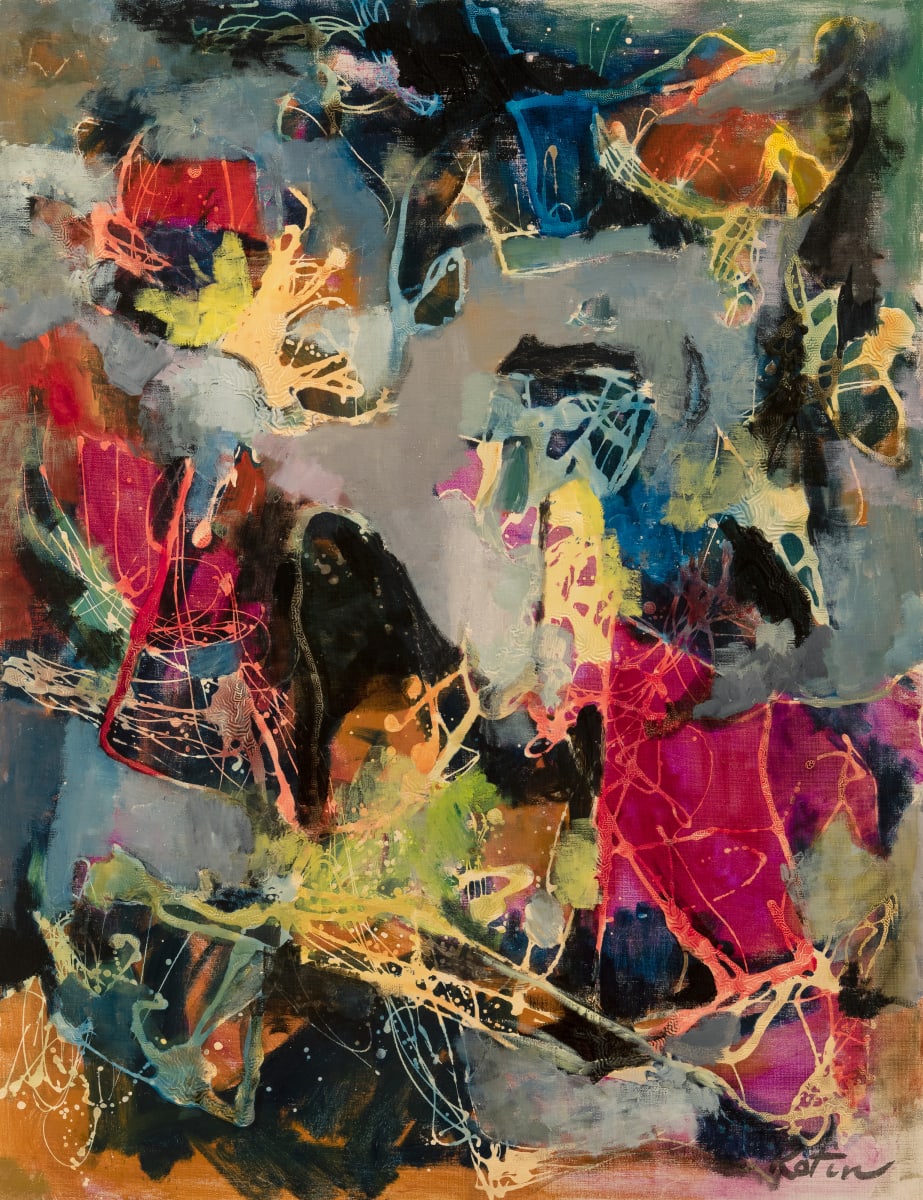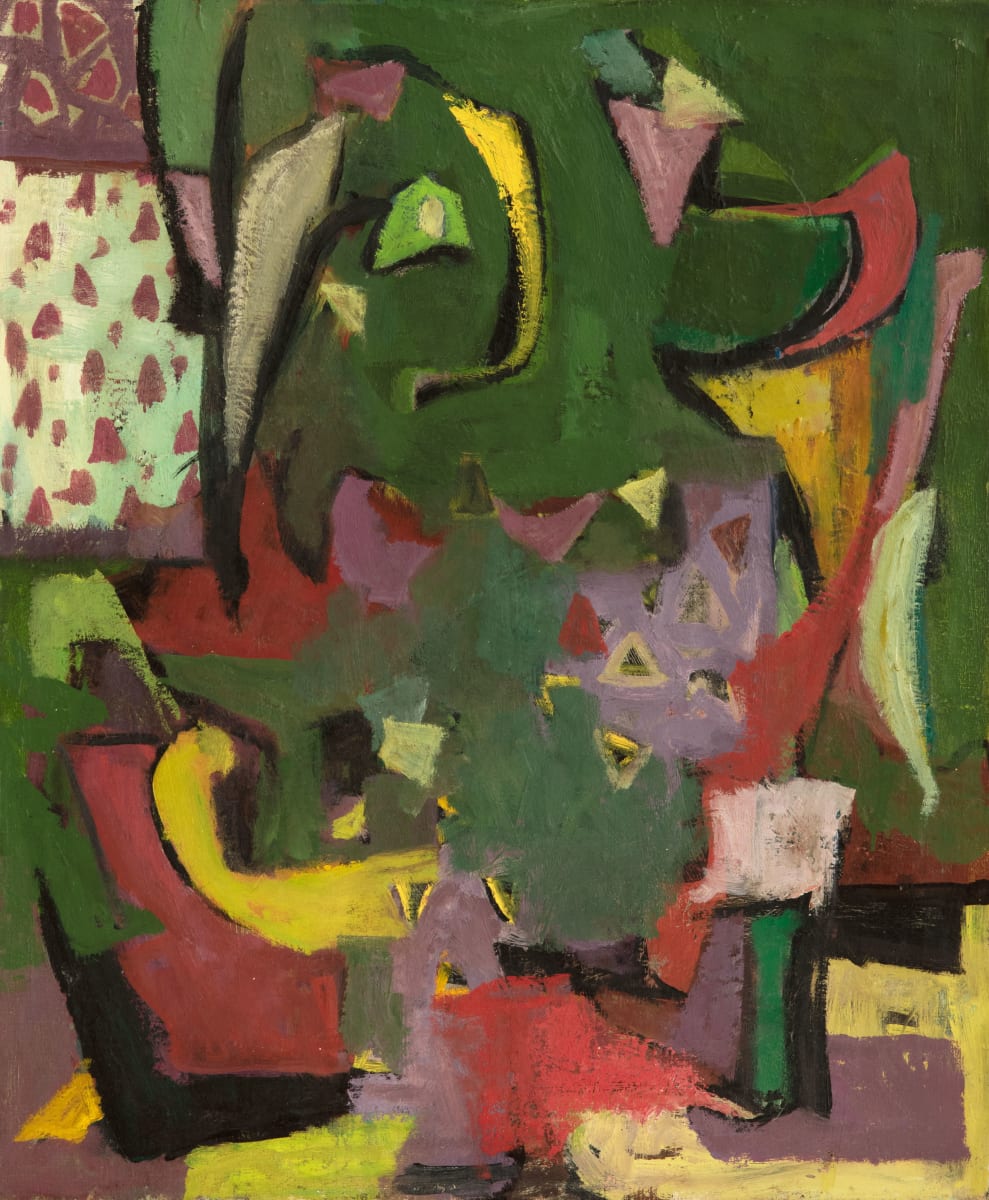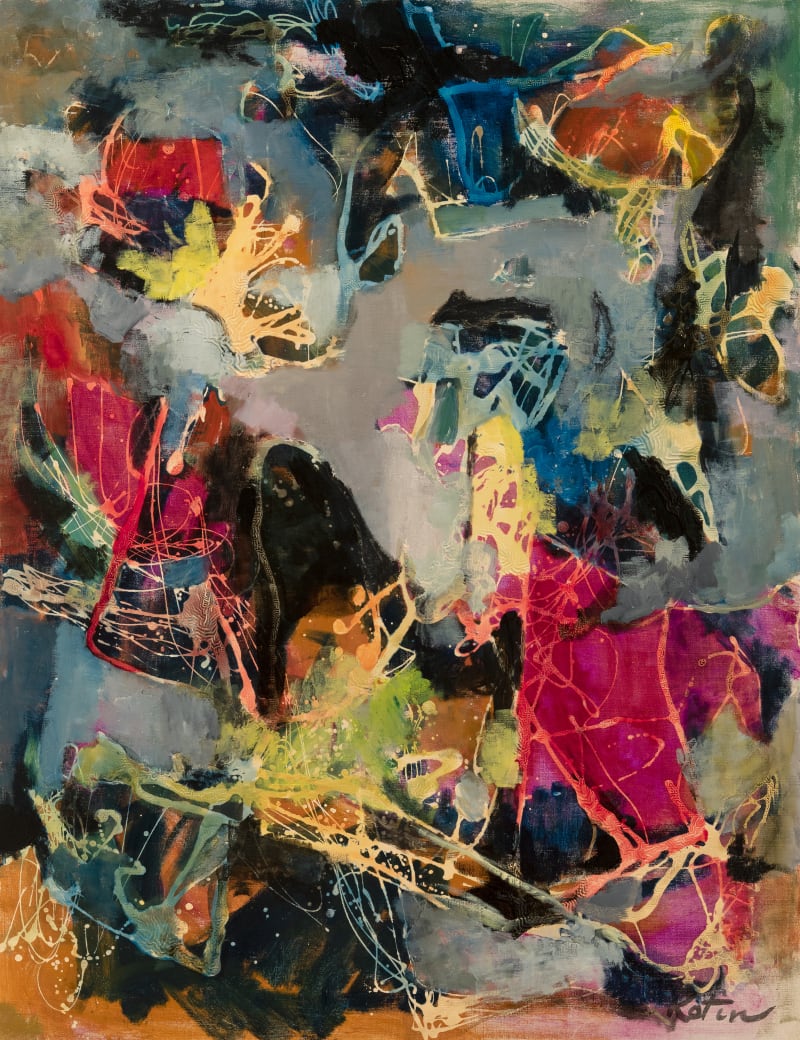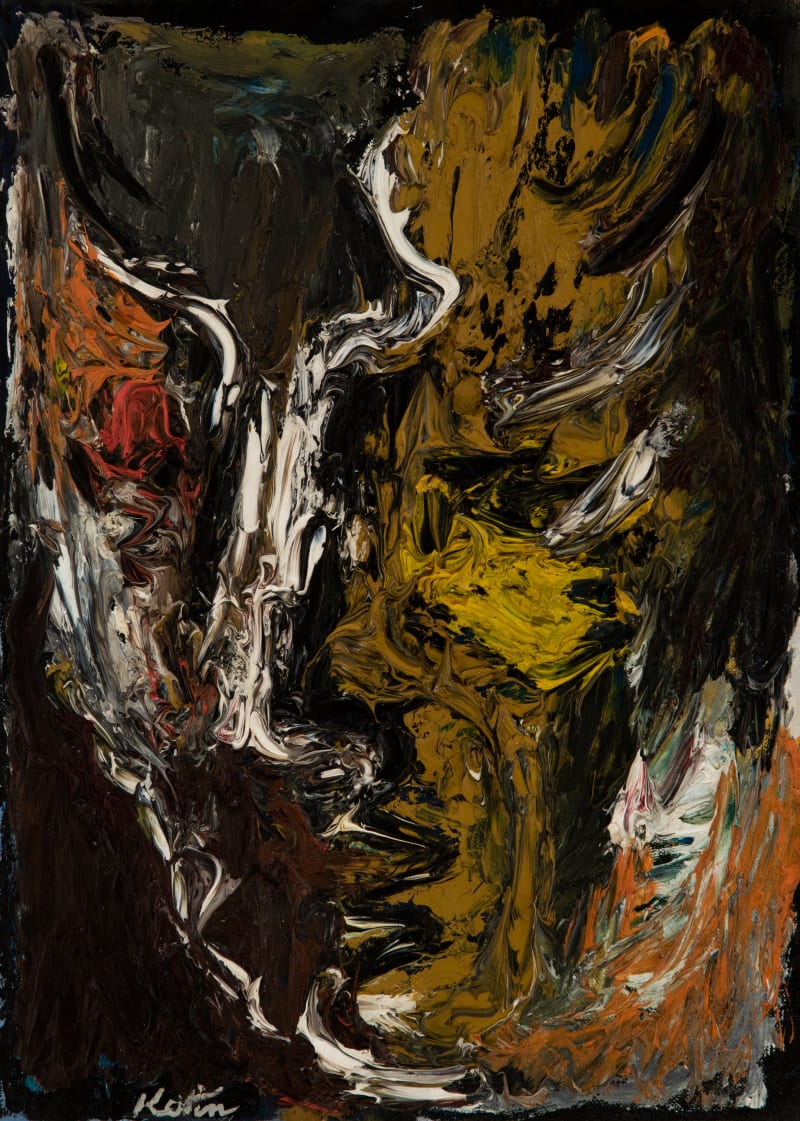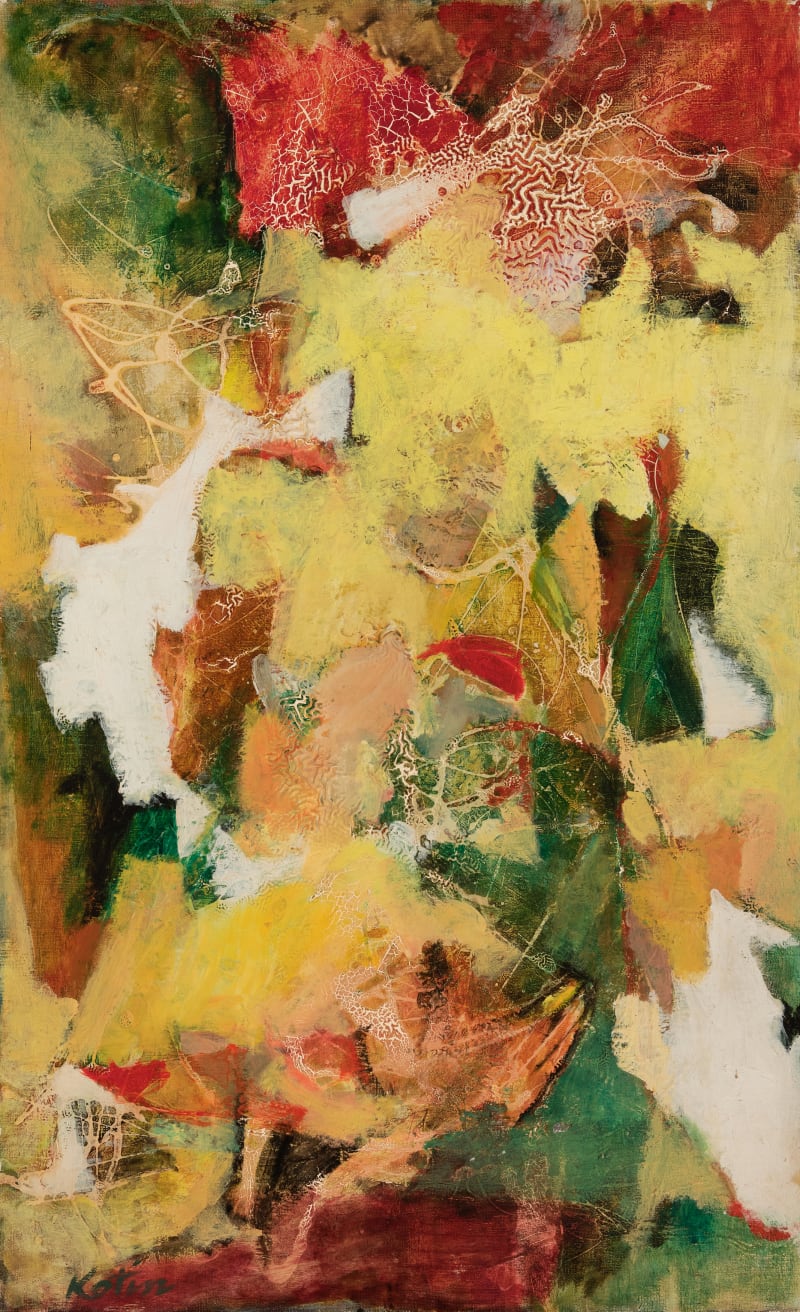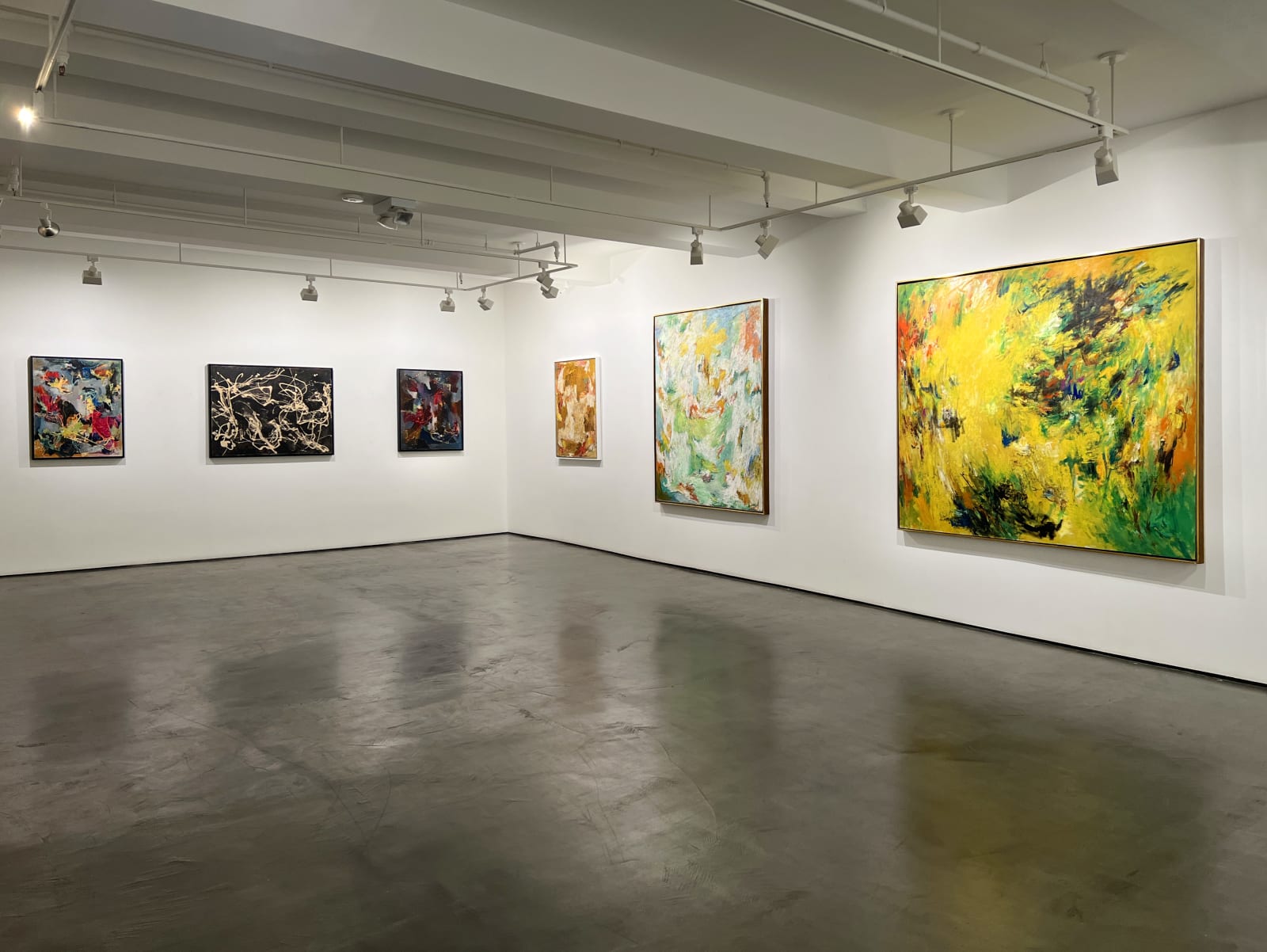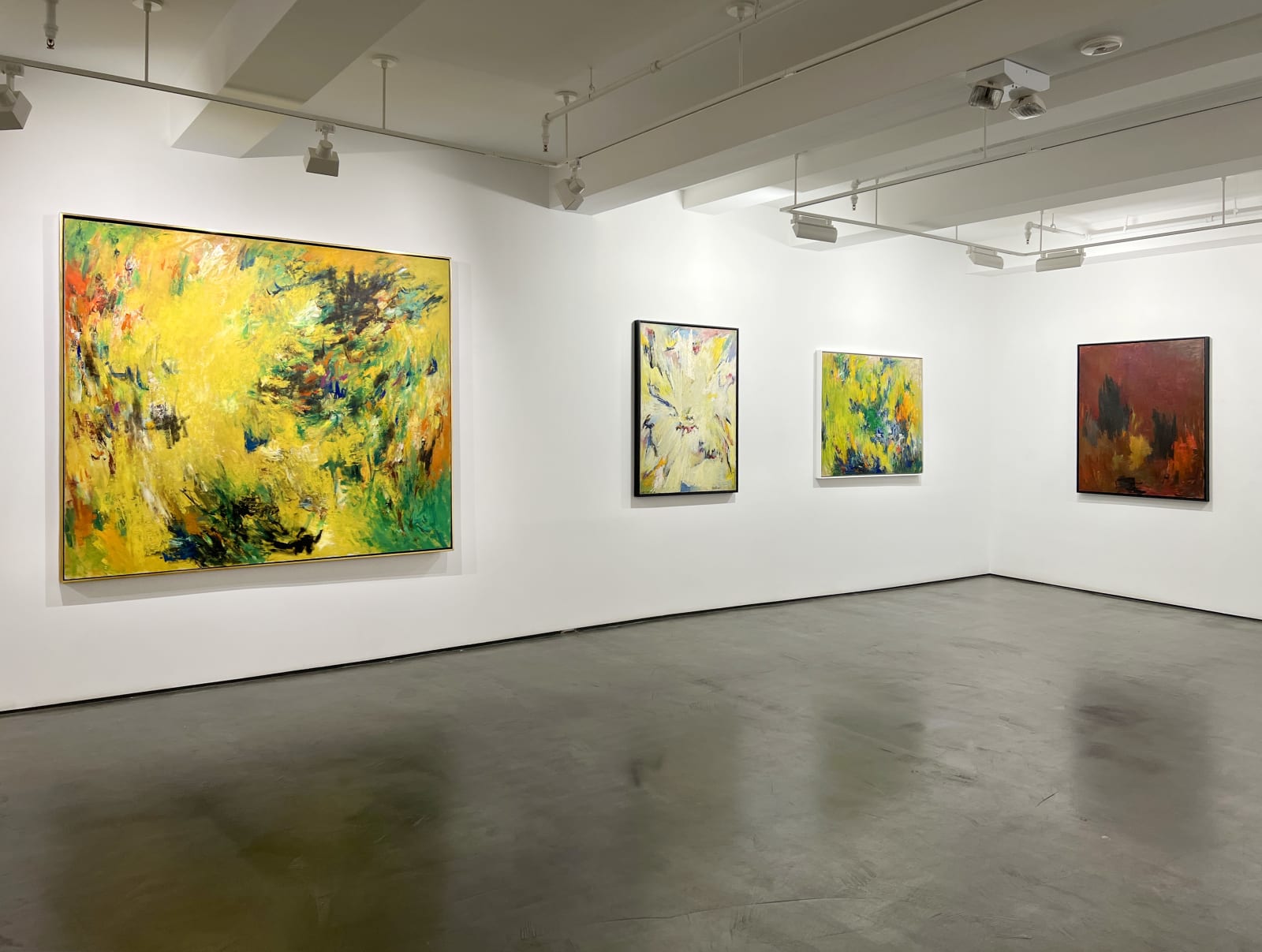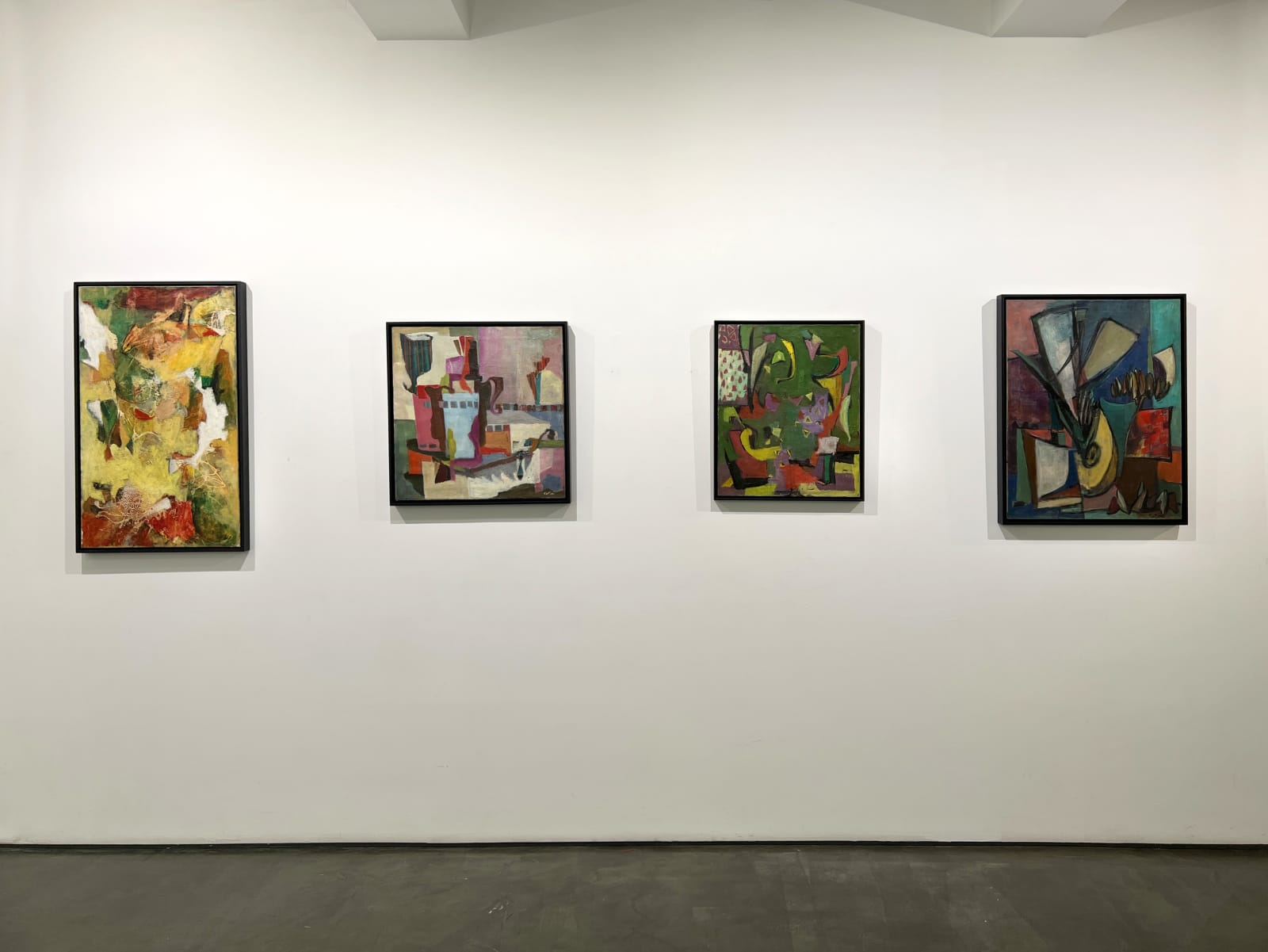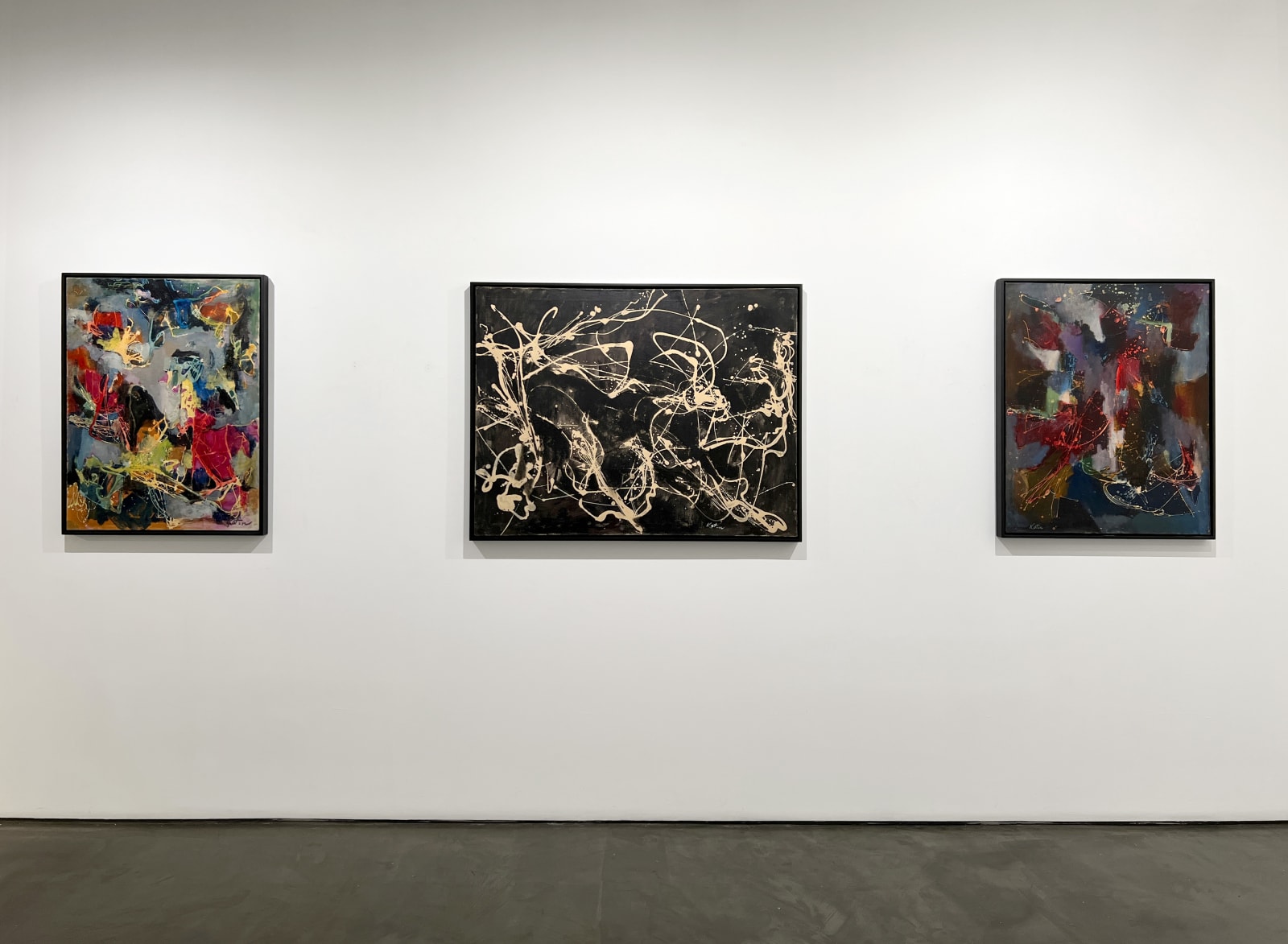
Opening Reception
Wednesday, May 4, 5:00-8:00PM
RSVP REQUIRED: rsvp@hollistaggart.com or +1 212 628 4000
His practice connects with the predominant dialogues and arguments of the time and captures his own grappling with questions of abstraction and expressionism.
For the month of May, Hollis Taggart will occupy a space on the second floor of its W. 26th Street building. Here, on May 4, the gallery will present an expansive exhibition of works by Albert Kotin, produced between the late 1940s and mid 1960s. Kotin studied with Hans Hofmann and was an active member of the storied Eighth Street Club, a circle of artists in lower Manhattan that included Franz Kline, Willem de Kooning, and James Rosati. Albert Kotin: Space Interwoven will include approximately 25 paintings that capture the evolution of Kotin’s practice and highlight the evocative canvases from the height of his career in the 1950s. Many of Kotin’s works have been held and preserved by a single private collector. Through this exhibition, Hollis Taggart is bringing them back into public view for the first time in many years and advancing scholarship about the artist’s practice through an accompanying catalogue. The gallery is also engaging in an archival process and will support the ongoing stewardship of Kotin’s legacy into the future.
For the month of May, Hollis Taggart will occupy a space on the second floor of its W. 26th Street building. Here, on May 4, the gallery will present an expansive exhibition of works by Albert Kotin, produced between the late 1940s and mid 1960s. Kotin studied with Hans Hofmann and was an active member of the storied Eighth Street Club, a circle of artists in lower Manhattan that included Franz Kline, Willem de Kooning, and James Rosati. Albert Kotin: Space Interwoven will include approximately 25 paintings that capture the evolution of Kotin’s practice and highlight the evocative canvases from the height of his career in the 1950s. Many of Kotin’s works have been held and preserved by a single private collector. Through this exhibition, Hollis Taggart is bringing them back into public view for the first time in many years and advancing scholarship about the artist’s practice through an accompanying catalogue. The gallery is also engaging in an archival process and will support the ongoing stewardship of Kotin’s legacy into the future.
In her catalogue essay for the exhibition, art historian Christa Noel Robbins writes that in 1958, the art critic Harold Rosenberg was asked to develop a profile of the now iconic “artist block,” located on East Tenth Street between Third and Fourth Avenues in Lower Manhattan. The block was home to many of the artists and writers credited for shaping the Abstract Expressionist movement, including Elaine de Kooning, Willem de Kooning, Joan Mitchell, and Milton Resnick. A now lesser known but no less engaged and active voice within this group, who also lived on the block and was the first artist pictured in Rosenberg’s article, is Albert Kotin.
As part of the “The Club,” Kotin was featured in the historic 1951 Ninth Street Show at the Stable Gallery, which launched the Abstract Expressionist movement. Given the success of this show, the tradition continued for five years, and Kotin was one of the few artists to be invited to participate in every iteration of this Annual—a distinction made more meaningful as participants were chosen by fellow artists. Kotin’s style developed over the 1940s and 1950s, shifting from early works that focused primarily on engaging questions of depth, tension, and surface plane within abstraction to more mature works that took on expressive qualities of churning impasto and heavily textured surfaces. His practice connects with the predominant dialogues and arguments of the time and captures his own grappling with questions of abstraction and expressionism.
Given the depth and quality of Kotin’s practice, it is difficult to say why his name and work fell out of the dominant narratives of art history. His disengagement with the politics of the 1960s may have impacted his ongoing connection to art world discussions and presentations. While we may never know why certain artists were lifted to heroic stature while others were forgotten with the march of time, the upcoming exhibition at Hollis Taggart offers a fresh opportunity to experience the work of an artist very much central to this significant moment in the trajectory of twentieth-century art.
“Our gallery has always been inspired by untold stories of art and artists. Across our more than 40-year history, we have renewed commercial interest and driven scholarship about numerous artists, including Leon Berkowitz, Audrey Flack, Marjorie Strider, Kay Sage, Idelle Weber, and Michael Corinne West. This spring season captures our ongoing engagement with expanding the narratives of art history by illuminating the voices of those artists that have been lost to time but are so deserving of recognition. It also represents an important solidification of the gallery’s vision and approach—one that we feel is essential to the understanding of contemporary art dialogues. We look forward to engaging visitors with the work of these incredible artists and to furthering new study of their practices,” said Hollis Taggart.
For more information about Albert Kotin: Space Interwoven, please contact us at info@hollistaggart.com or +1 212.628.4000.
For press inquiries, please contact Alina Sumajin, PAVE Communications & Consulting at alina@paveconsult.com, + 1 646.369.2050.








